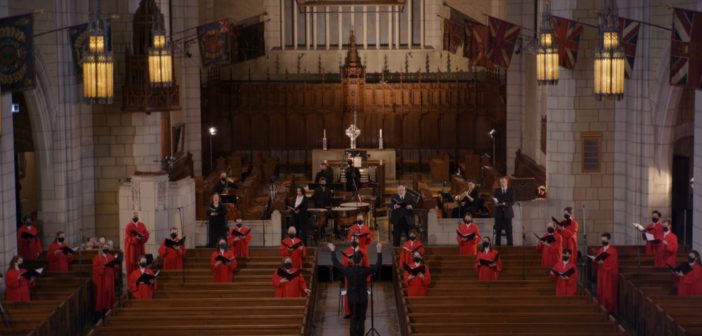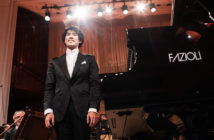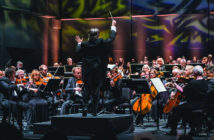Quite remarkable, what Verdi does with the marimba in the Requiem.
What Requiem, you ask? Which Verdi?
To explain: The Church of St. Andrew and St. Paul in Montreal has been responding with considerable enterprise to lockdown restrictions by performing reductions of full-sized choral masterpieces. Online, of course.
A few months ago, the work on offer was Brahms’s Ein deutsches Requiem, which normally calls for many more choristers than the 24 professionals who comprise the A&P choir.
More recently the subject was Verdi’s even grander reflection on mortality in a version for an unimaginably small cohort of five instrumentalists, including the aforementioned marimba, which was called on to replicate sonorities as disparate as the muted cellos of the opening and some of the multiple trumpets of the Tuba mirum. (Credit is owing percussionist Ben Duinker for a job well done.)
It would not be accurate to say that this radical reduction by the German choral director Michael Betzner-Brandt preserves all the splendour of the original. But it does project an elemental simplicity that can be counted a virtue in its own right. A bass-drum whack (Duinker again) or a horn obbligato (Catherine Turner) speaks in high relief in a relatively minimal landscape.
Another name worth mentioning early is Jonathan Oldengarm, who almost literally pulled out all the stops of the mighty A&P Casavant organ. Since the backbone of the reduction is a piano part, we can say confidently that this performance was more elaborate and colourful than what Betzner-Brandt had in mind.
Still, the basis of any successful Requiem is a well-prepared conductor and a strong vocal quartet. Jean-Sébastien Vallée, here armed with a baton, gave generous expression to the parts while holding together the whole. The steady rise and fall of the Lachrymosa at a well-judged largo was typical of the results he consistently achieved.
This movement engaged all the voices, and to good effect. Solo passages also went well. Aline Kutan, a darker soprano than she once was, yet with her beautiful B flat intact, sounded wonderful in both the dramatic and lyrical elements of the Libera me. Mezzo-soprano Rihab Chaieb got the Quid sum miser off to a luminous start; tenor John Mac Master mixed heroic tone with palpable devotion in the Ingemisco. If Olivier Laquerre, here classed as a bass, was not always ideally weighty, the Confutatis made a sincere impression. At points it was possible to imagine these voices on the opera stage rather than in a church – an entirely appropriate state of affairs.
The choir was imposing or soothing as the occasion demanded. Climaxes had body. As in the Brahms, the choristers were standing in the front pews, suitably distanced and wearing masks. In Brahms, they were facing the chancel; in Verdi, the rear of the church. If the earlier project seemed more atmospheric, this might be owing in part to the fact that it was recorded after sunset.
The Brahms, a collaboration with the OSM Players’ Association and the Maison du Parc, is on YouTube. The Verdi, a collaboration with the Canadian International Organ Competition that was first presented on Good Friday, is available at lepointdevente.com until July 25. Both are recommended.














